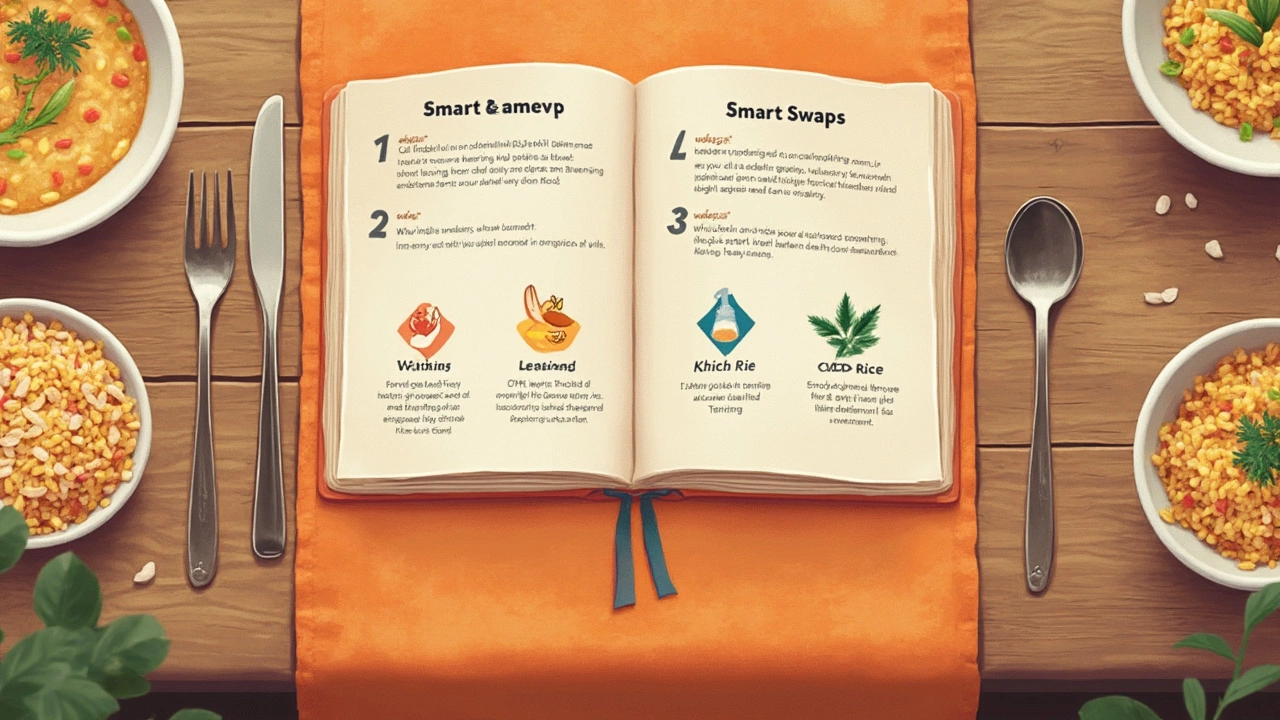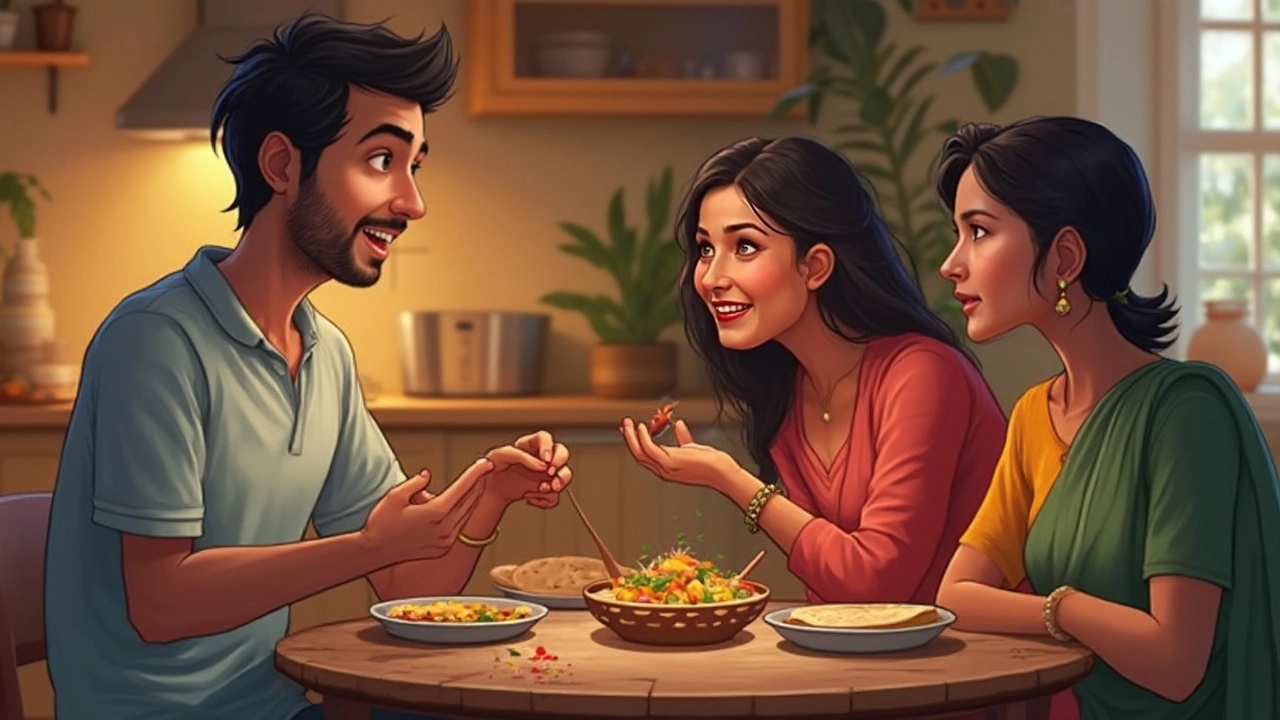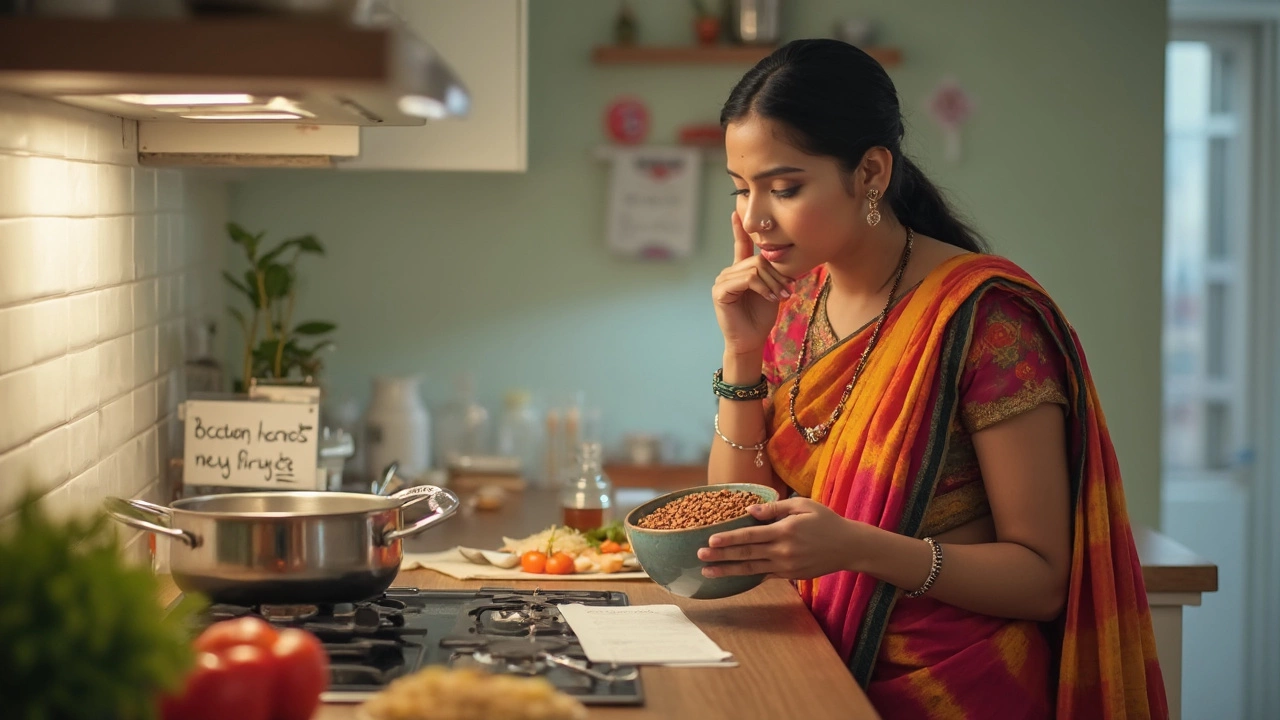Lentils are a comfort food for so many of us, but sometimes your body just can't handle them. Ever felt heavy or bloated after a bowl of dal? You're not alone. Lentils have fiber and certain natural compounds that, for some people, can cause more pain than pleasure.
There are also times when eating lentils is actually not safe, like if you have a specific health condition or allergy. It’s not just about what tastes good—it’s about what your body can really use. And don't forget: uncooked or undercooked lentils? A definite no. They can cause digestive trouble, or worse.
If you’ve ever scratched your head wondering when to say “no” to this pantry staple, or how to swap it out without missing your favorite meals, you’re about to get some real answers.
- When Lentils Can Upset Your Stomach
- Lentils and Food Allergies
- Times to Skip Lentils for Certain Medical Conditions
- Preparation Mistakes That Make Lentils Harmful
- Better Substitutes and Safer Ways to Enjoy Dal
When Lentils Can Upset Your Stomach
If you've ever felt gassy, bloated, or even cramped after eating lentils, you're definitely not making it up. Lentils are packed with fiber and a type of carb called oligosaccharides. Your gut bacteria love to munch on these, but in the process, they create a lot of gas. For most people, this is just a nuisance, but if you have a sensitive stomach, irritable bowel syndrome (IBS), or just a low tolerance for fiber, lentils can hit hard.
The thing is, not everyone reacts the same way. Some folks can handle a big bowl of dal with no drama, while others regret even a small spoonful. Here’s a quick look at why lentils might upset your stomach:
- High fiber: Lentils have around 8 grams of fiber per cooked cup. If your daily fiber intake doubles overnight, your digestive system can freak out.
- Oligosaccharides: These are complex carbs most people can't digest fully, leading to more gas and bloating.
- Phytates and tannins: Lentils also have natural compounds that can affect digestion and cause discomfort in some folks.
For anyone dealing with IBS or a newly sensitive gut, those oligosaccharides are the real troublemakers. If you suddenly add a ton of lentils to your diet, don’t be surprised if you need to take a break from your social plans.
| Digestive Issue | Why Lentils Can Trigger It |
|---|---|
| Bloating & Gas | High fiber and oligosaccharides break down in the colon, producing gas. |
| Stomach Pain | Rapid fiber increase can be harsh for people with sensitive guts or IBS. |
| Loose Stools | Too much fiber acts like a broom, speeding up movement in your intestines. |
| Heartburn/Acid Reflux | Lentils can trigger symptoms, especially if they’re heavily spiced or eaten in large amounts. |
Here are a few tips to make your dal nights less dramatic:
- Start with small servings and gradually add more lentils to your meals.
- Soak lentils for a few hours before cooking to help reduce those gas-causing compounds.
- Cook them until they’re super soft; this makes them easier on your stomach.
- If fiber just isn’t your friend, try splitting the serving with rice or another grain.
Don’t try to be a lentil hero if your body is telling you to chill. Listen to your stomach—and adjust your lentils habit accordingly.
Lentils and Food Allergies
Lentils are often seen as a safe food, but allergies to them are a real thing. If you break out in a rash, feel itchy in your mouth, or have trouble breathing right after eating lentils, you might be allergic. In countries like Spain and India, lentil allergy rates are higher compared to other places. The protein in lentils triggers the reaction, and even a tiny amount can cause symptoms in sensitive people.
Lentil allergy sometimes pops up when people already have trouble with other legumes like chickpeas or peanuts. This is called cross-reactivity. So, if you’re allergic to peanuts or other beans, it's smart to watch out for lentils.
- Watch for signs like swelling, stomach pain, or trouble breathing after eating lentils.
- Kids usually outgrow some allergies, but lentil allergy can stick around.
- Restaurants and packaged foods sometimes sneak in lentil flour, so always read labels.
- If you get severe reactions, an allergy test helps confirm the problem.
Here's a quick look at how common lentil allergy is compared to some other common legume allergies:
| Legume | Estimated Allergy Rate (Worldwide) |
|---|---|
| Peanuts | 1-2% |
| Lentils | Up to 0.5% |
| Soybeans | 0.3-0.4% |
| Chickpeas | 0.1-0.2% |
If your doctor tells you to skip lentils, don’t risk it. There’s no safe way to eat "just a little" if you’re allergic. And if you love lentils in recipes, try swapping in rice, quinoa, or potatoes as a soft landing spot. There are loads of dal recipes out there that let you avoid triggers and still enjoy a hearty meal.

Times to Skip Lentils for Certain Medical Conditions
Lentils are healthy for most people, but there are a few medical reasons when you really should keep them off your plate. If you fall into any of these categories, it’s smart to take a break from lentils or talk to a doctor before eating them again.
- Kidney Problems: Lentils are loaded with potassium and phosphorus. If your kidneys aren’t working well, they can’t get rid of those minerals easily. For people on a kidney-friendly diet, skipping lentils can help control blood mineral levels.
- Gout: Lentils have purines—substances that break down into uric acid in your body. Too much uric acid and you might have a gout attack, which is painful. People with gout often need to reduce foods like lentils to limit flare-ups.
- Irritable Bowel Syndrome (IBS) and Sensitive Gut: The fiber in lentils is great, but for folks with IBS, that fiber can mean more cramping or trips to the bathroom. The FODMAPs in lentils (a kind of carb that bothers sensitive guts) can cause trouble for some people.
- Certain Digestive Disorders: If you have Crohn's disease, ulcerative colitis, or other digestive problems, lentils might be hard to digest during flare-ups. They can make symptoms worse when your gut is sensitive.
- Allergies: Some folks have real allergies to lentils, which can cause rashes, swelling, or even more serious reactions. Even though it's rare, it’s definitely a reason to avoid them completely.
Here’s a quick peek at who should be most careful with lentils:
| Condition | Why Lentils Might Be a Problem |
|---|---|
| Kidney disease | High in potassium and phosphorus |
| Gout | Contains purines that raise uric acid |
| IBS/sensitive gut | High FODMAPs and fiber can irritate gut |
| Crohn’s/colitis | Difficult to digest during flare-ups |
| Allergy | Can trigger allergic reactions |
Not everyone with these issues has to avoid lentils forever. Sometimes, it’s just about timing—like skipping them during a flare-up or eating them in smaller amounts if your diet allows. Always check with your doctor or dietitian if you’re not sure. Being careful about lentils can help you feel better while keeping your meals safe and satisfying.
Preparation Mistakes That Make Lentils Harmful
Messing up when you're making lentils might not just ruin a meal—it can land you with a stomachache or worse. Plenty of people have their own way of cooking lentils, but skipping some basic steps can actually make them hard on your body.
The biggest mistake? Not cooking lentils all the way through. Raw or barely cooked lentils have lectins—natural compounds that can upset your stomach and, in rare cases, cause food poisoning symptoms. Always simmer lentils until they're soft. Don't rush the process, even if the packet says "ready in 15 minutes." Some types, like green and brown lentils, take longer.
Another common slip-up is not rinsing or soaking lentils. Dry lentils sometimes contain dust, small stones, or bits of debris from processing. A quick rinse under running water clears out most nasties. If you want them even easier to digest, soak them for a couple of hours—or at least rinse until the water runs clear. This also helps get rid of some of the compounds that make you gassy.
Salt and tomatoes are kitchen favorites, but dumping them in too early can make your lentils tough. Add acidic or salty stuff after your lentils are soft. Some people also forget to store cooked lentils safely. Leaving them out too long at room temperature lets bacteria grow fast. Always pop leftover lentils in the fridge within two hours.
- Always rinse lentils before cooking.
- Cook until completely soft to get rid of lectins.
- Add salt, tomatoes, or lemon only when lentils are already cooked.
- Soak if you have trouble digesting lentils.
- Store leftovers in the fridge quickly to avoid food poisoning.
Get these habits right and your dal recipe will always be safe to eat and easy on your stomach.

Better Substitutes and Safer Ways to Enjoy Dal
If lentils don’t work for you, that doesn’t mean dal is off your table forever. There are easy swaps you can make that are gentle on digestion but still taste great. Chickpeas, mung beans, split peas, and even red lentils (when cooked until super soft) are popular picks. Each has its own nutrition kicks and cooks up just like traditional dal, but some are way easier on sensitive stomachs.
So, which swaps work best? Here’s a quick look at some options:
- Chickpeas (chana): Mild and nutty, these are great in curries. When properly soaked and cooked, they rarely cause digestive drama.
- Mung beans: The green ones, especially after being soaked overnight, are one of the lightest legumes you can eat.
- Yellow split peas: These cook down soft and creamy, giving a rich dal feel with less fuss than regular lentils.
- Roasted pumpkin or zucchini: If you want to dodge all legumes, they mash up nicely and take to spices well.
The most important rule? Cook everything thoroughly. Hard beans or half-cooked lentils are trouble for your gut—steer clear.
Sprouting beans before you toss them into dal can also make a big difference. Studies show sprouting helps break down stuff that makes things gassy and boosts nutrition. Here’s a quick method for safer, easier-to-digest dal:
- Soak beans or peas for at least 8 hours or overnight.
- Rinse well and let them sprout for 1-2 days if you’ve got the patience.
- Cook until soft—don’t rush this step.
- Try adding a pinch of asafoetida (hing) or cumin while cooking to help reduce bloating.
"When someone tells me legumes are too heavy for them, I always suggest sprouting or choosing mung dal. It’s simple changes that keep Indian food on their menus." — Dr. Nisha Chopra, gastroenterologist, as quoted in The Indian Express
If you’re curious about how these options measure up nutrition-wise, here’s a handy table:
| Dal/Legume | Calories (per 100g cooked) | Protein (g) | Fiber (g) | Ease on Digestion |
|---|---|---|---|---|
| Lentils | 116 | 9.0 | 7.9 | Moderate |
| Chickpeas | 164 | 8.9 | 7.6 | Better if soaked/cooked well |
| Mung Beans | 105 | 7.0 | 7.6 | Gentle, especially split variety |
| Yellow Split Peas | 118 | 8.3 | 8.3 | Mild on digestion |
Don’t forget to watch your portion sizes and balance your meal with enough veggies. That’s the trick to enjoying your lentils or any dal alternative without the side effects.
